
The Tohono Oʼodham are a Native American people of the Sonoran Desert, residing primarily in the U.S. state of Arizona and the northern Mexican state of Sonora. The federally recognized tribe is known in the United States as the Tohono Oʼodham Nation.

The Native American Graves Protection and Repatriation Act (NAGPRA), Pub. L. 101-601, 25 U.S.C. 3001 et seq., 104 Stat. 3048, is a United States federal law enacted on November 16, 1990.

The Shawnee are an Indigenous people of the Northeastern Woodlands. Their language, Shawnee, is an Algonquian language.
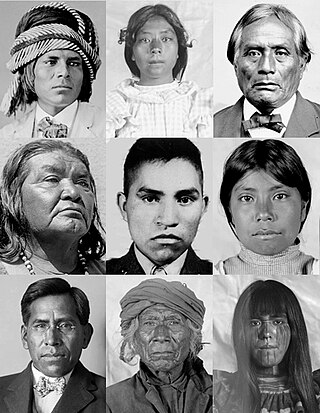
The Akimel O'odham, also called the Pima, are a group of Native Americans living in an area consisting of what is now central and southern Arizona, as well as northwestern Mexico in the states of Sonora and Chihuahua. The majority population of the two current bands of the Akimel O'odham in the United States are based in two reservations: the Keli Akimel Oʼodham on the Gila River Indian Community (GRIC) and the On'k Akimel O'odham on the Salt River Pima-Maricopa Indian Community (SRPMIC).
Indigenous peoples of Arizona are the Native American people of the state of Arizona. These include people that have lived in the region since time immemorial; tribes who entered the region centuries ago, such as the Southern Athabascan peoples; and the Pascua Yaqui who settled Arizona in mass in the early 20th century, though small communities had been in the region for hundreds of years prior.

The Sinagua were a pre-Columbian culture that occupied a large area in central Arizona from the Little Colorado River, near Flagstaff, to the Verde River, near Sedona, including the Verde Valley, area around San Francisco Mountain, and significant portions of the Mogollon Rim country, between approximately 500 and 1425 CE.
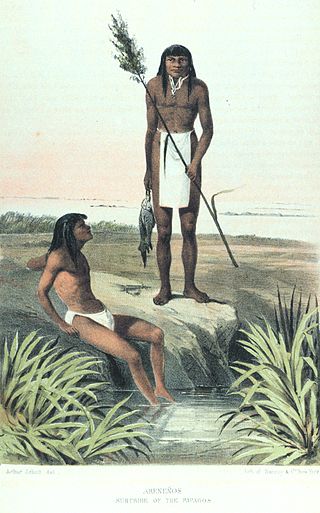
The Hia C-eḍ Oʼodham, also known as Areneños or Sand Papagos, are a Native American peoples whose traditional homeland lies between the Ajo Range, the Gila River, the Colorado River, and the Gulf of California. They are currently unrecognized at both the state and federal level in the United States and Mexico, although the Tohono Oʼodham Nation has a committee for issues related to them and has land held in trust for them. They are represented by a community organization known as the Hia-Ced Oʼodham Alliance. The Hia C-eḍ Oʼodham are no longer nomadic, and the majority today live in or near Ajo, Arizona, or the small settlements of Blaisdell and Dome near Yuma.
Patawomeck is a Native American tribe based in Stafford County, Virginia, along the Potomac River. Patawomeck is another spelling of Potomac.

Terrol Dew Johnson is a Tohono O'odham basket weaver, sculptor, and health advocate, who promotes Indigenous foods to prevent diabetes.
The Association on American Indian Affairs is a nonprofit human rights charity located in Rockville, Maryland. Founded in 1922, it is dedicated to protecting the rights of Native Americans.
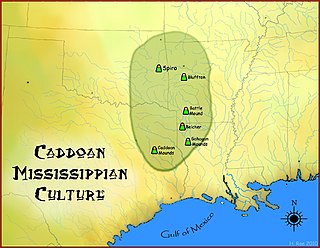
The Caddoan Mississippian culture was a prehistoric Native American culture considered by archaeologists as a variant of the Mississippian culture. The Caddoan Mississippians covered a large territory, including what is now Eastern Oklahoma, Western Arkansas, Northeast Texas, Southwest Missouri and Northwest Louisiana of the United States.

Tohono Oʼodham Community College (TOCC) is a public tribal land-grant community college in Sells, Arizona. TOCC's student body is 88 percent American Indian/Alaskan Native. Tohono Oʼodham Community College serves approximately 216 students. The college's faculty and staff is 57 percent American Indian, half of whom are Oʼodham.

The Recognition of Native American sacred sites in the United States could be described as "specific, discrete, narrowly delineated location on Federal land that is identified by an Indian tribe, or Indian individual determined to be an appropriately authoritative representative of an Indian religion, as sacred by virtue of its established religious significance to, or ceremonial use by, an Indian religion". The sacred places are believed to "have their own 'spiritual properties and significance'". Ultimately, Indigenous peoples who practice their religion at a particular site, they hold a special and sacred attachment to that land sacred land.
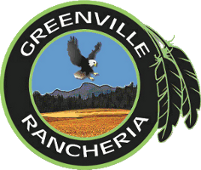
The Greenville Rancheria of Maidu Indians of California is a federally recognized tribe of Maidu people in Plumas and Tehama Counties, California.
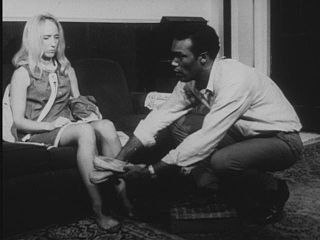
Depictions of race in horror films has been the subject of commentary. Critics have discussed the representation of race in horror films in relation to the presence of racist ideas, stereotypes and tropes within them. The horror genre has conversely also been used to explore social issues including race, particularly following popularization of social thrillers in the 2010s.
Donna L. Moody was a scholar, author, teacher, public speaker, Abenaki Repatriation and Site Protection Coordinator, and founder of the Winter Center for Indigenous Traditions.
Several Indigenous peoples who live on the United States–Mexico border have objected to the construction of a border wall on their territories and the militarization of the border by the United States government. The US–Mexico border crosses several Indigenous territories and divides these communities. The barrier erected between the United States and Mexico cuts through and/or affects at least 29 Indigenous tribes, which include Kumeyaay Nation and Tohono O'odham.
Funerary archaeology is a branch of archaeology that studies the treatment and commemoration of the dead. It includes the study of human remains, their burial contexts, and from single grave goods through to monumental landscapes. Funerary archaeology might be considered a sub-set of the study of religion and belief. A wide range of expert areas contribute to funerary archaeology, including epigraphy, material culture studies, thanatology, human osteology, zooarchaeology and stable isotope analysis.
Wana the Bear v. Community Construction (1982) was a court case decision by the California Court of Appeals that upheld the non-protected status of Native American burial grounds. The decision effectively allowed for the continued mass desecration of Native American burial sites, including looting, since they were not legally protected as cemeteries. The case is often referred to as a display of ethnocentrism in legal decisions.
Cal NAGPRA was an act created by the state of California which was signed into law in 2001. The act was created to implement the same repatriation expectations for state-funded institutions, museums, repositories, or collections as those federally supported through NAGPRA. Cal NAGPRA also supports non-federally recognized tribes within California that were exempt from legal rights to repatriation under the federal NAGPRA act.













